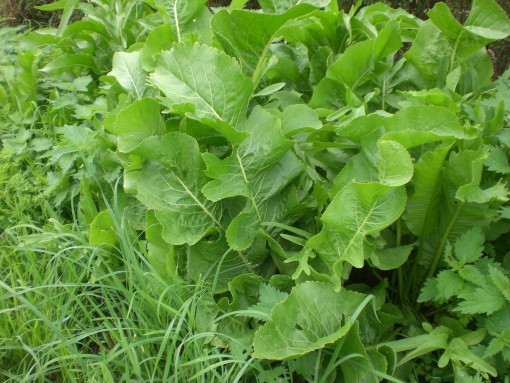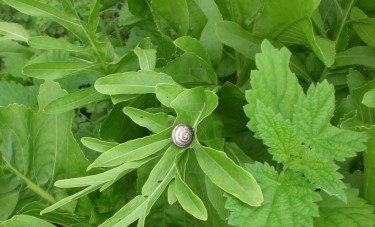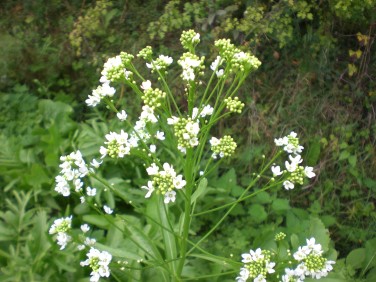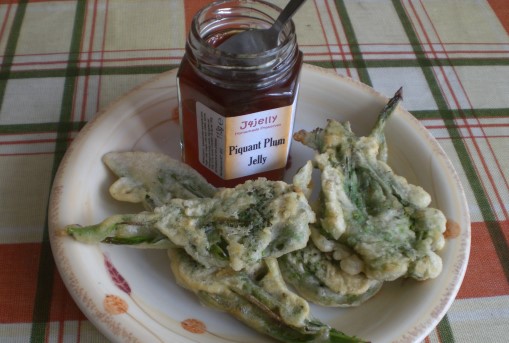Horseradish
By Mike on Sunday, August 21, 2011, 21:59 - Permalink
 All along a broad roadside verge near where I live, Horseradish grows - I've been noticing it for years, intending to forage some.
All along a broad roadside verge near where I live, Horseradish grows - I've been noticing it for years, intending to forage some.
I finally got around to that - and picked some of the flowers to make fritters.
What is Horseradish?

Armoracia rusticana - horseradish is a perennial related to mustard and watercress, It forms dense clumps of large, robust upright leaves, wavy at the edges, arising from a thick, fleshy taproot that may grow down a couple of feet or more.
 These particular horseradish plants happen to have been cut down to the ground by mowing about a month ago - causing them to regrow quite vigorously.
These particular horseradish plants happen to have been cut down to the ground by mowing about a month ago - causing them to regrow quite vigorously.
The resprouted foliage has a variably pinnate, fern-like arrangement normally only seen in the smaller first leaves of the season.
 The further north you go, the less likely it is that horseradish plants will produce flowers. Down here in the south, they're not uncommon.
The further north you go, the less likely it is that horseradish plants will produce flowers. Down here in the south, they're not uncommon.
The flowers are pure white and four-petalled - very typical of plants in this genus - and are held on slender stems radiating and branching from a central stalk.
The open flowers have quite a distinctive and strong aroma - sort of musky honey-mustard.
 I picked some of the open flowers and some of the more tightly-packed heads of unopened buds. They have a similar appearance to sprouting broccoli or turnip tops.
I picked some of the open flowers and some of the more tightly-packed heads of unopened buds. They have a similar appearance to sprouting broccoli or turnip tops.
At the younger, unopened stage, the stems were very tender and snapped easily - I might even try eating these raw sometime.
I do, of course, intend to go back later in the year and unearth samples of the real treasure - the pungent horseradish root.
 I gave them the treatment I usually prefer for leafy sprouts like these - dipping in a simple seasoned flour batter and frying quickly in hot oil.
I gave them the treatment I usually prefer for leafy sprouts like these - dipping in a simple seasoned flour batter and frying quickly in hot oil.
The result was these tasty and substantial fritters. I expected them to be quite pungent - in fact, they were fairly mild, but with a good crisp crunch and flavour.

Tasty on their own, they were made perfect by the addition of a little spiced plum jelly I happened to have in the cupboard.
Uses For Horseradish
Horseradish is most commonly used as a sauce, made from the grated root - the process of shredding it causes the cells to release the eye-wateringly pungent chemicals for which horseradish is famous.
Classically, horseradish is a companion for roast beef (and this is a fantastic combination). It also works very well with oily fish such as mackerel or salmon, or smoked and preserved meats, salami and other cured sausages and strong cheeses. A teaspoon of grated horseradish root gives a great kick to coleslaw.
Medicinally, horseradish is useful for the relief of symptoms of colds and flu - the hot pungency is great for loosening congestion of the nose and sinuses and somewhat counter-intuitively, it's great for sore throats and tickly coughs.
